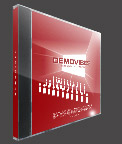 "The Scene"
"The Scene"

I enjoy collecting old text files and
demoscene stuff. There's a lot of people interested in this
stuff, so you can find a lot of old archives of ASCII/ANSI artwork,
e-zines, demos, cracktros, music and other stuff.. It also helps
that there's basically a perfect working emulator for almost every
hardware platform ever created.
Recently I discovered that Jason Scott had given a speech on Inter-Pirate battles through the years.
It's really facinating to read some of the files that get passed back
and forth between groups. You can get the archive here. There is also this site which you can spend many decades searching and looking at notices.
There also happens to be a load of Scene related collections on
archive.org. Below I'll start with some links to my favorite
Scene sites, and then provide some technical information about running
emulators.
Running graphic demos in Linux using Wine:
Running modern graphics demos under Wine is
a hit or miss. Apparently it boils down to how Wine can
process the items which use Windows proprietary calls (like Direct3D)
to interact with
the graphics card. On the other hand, running old school DOS,
Amiga, or C64 demos under Linux works great becuase we have emulators
such as DOSbox, FS-UAE, and Vice.
32 bit Windows demos can be run simply via
"wine xxxx.exe", YMMV. One thing I've noticed is that getting
vertical sync to work with OpenGL in these demos is a bit
strange. I use Nvidia graphics cards and tearing is something
that my eyes are very sensitive to. So I always configure my
systems to sync to vblank for OpenGL rendered content. In demos
using Wine I've noticed that sometimes you actually have to turn the
vsync off to get the vsync to
work! Apparently this has to do with the way Wine interacts with
the nvidia setting utility. More info here. If you see tearing in an OpenGL demo
and use an Nvidia card, try setting this environment variable before
running the demo with Wine: export __GL_SYNC_TO_VBLANK="0"
Amiga Emulation
UPDATE There's a new emulator on the block called FS-UAE and it's using the WinUAE codebase. It kicks ass, is easy to configure, and has already gained a huge following. I strongly suggest using it for Amiga emulation on Linux.
I consider the info from here on superceded by FS-UAE, but will leave it in case someone needs it. In Linux there is basically one native Amiga emulator and that is called UAE. There is the E-UAE version from Richard Drummond, then there is a OpenGL bilinear vsync patched version, then there is the actively developed P-UAE version which is attempting to port to different OSes and bring it to the level of WinUAE (discussion forums here).
68020 with 68881 FPU, fastest speed with timing
JIT 8092 MB cache
AGA graphics
Chip 2 MB
Slow 1 MB
Fast 8 MB
Z3 zorro 64 MB
Here is an example of using CLI techniques and scripts to run DOS demos using DOSbox:
Find some DOS demo you like. For example, recently I saw some demoscene videos called The Art of Textmode by RaD Man of ACiD and The Full History of the Demoscene by Tamas Polgar. In The Art of Textmode, RaD Man mentioned this old school DOS demo called Starport by Futurecrew, and he liked it becuase of the early parallax scrolling it used.
Create a text file in the same directory as the DOS exe and call it starport.conf, copy the following into it:
[sdl]
fullscreen=true
fulldouble=false
fullresolution=original
windowresolution=800x600
output=opengl
autolock=true
sensitivity=100
waitonerror=true
priority=highest,normal
mapperfile=mapper-0.74.map
usescancodes=true
[dosbox]
language=
machine=svga_s3
captures=capture
memsize=32
[render]
frameskip=0
aspect=false
scaler=advmame2x
[cpu]
core=auto
cputype=auto
cycles=30000
cycleup=500
cycledown=20
[mixer]
nosound=false
rate=44100
blocksize=1024
prebuffer=20
[midi]
mpu401=intelligent
mididevice=default
midiconfig=
[sblaster]
sbtype=sb16
sbbase=220
irq=7
dma=1
hdma=5
sbmixer=true
oplmode=auto
oplemu=default
oplrate=44100
[gus]
gus=true
gusrate=44100
gusbase=240
gusirq=5
gusdma=3
ultradir=C:\ULTRASND
[speaker]
pcspeaker=false
pcrate=44100
tandy=off
tandyrate=44100
disney=false
[joystick]
joysticktype=none
timed=true
autofire=false
swap34=false
buttonwrap=false
[serial]
serial1=dummy
serial2=dummy
serial3=disabled
serial4=disabled
[dos]
xms=true
ems=true
umb=true
keyboardlayout=auto
[ipx]
ipx=false
[autoexec]
mount C "/home/xxxxx/Scene" -t dir
C:
cd \
starport.exe
exit
Create another file in the same directory and call it starport.sh, copy the following into it, also make it executable:
#!/bin/bash
dosbox -conf ./starport.conf ;
Now simply run the starport.sh script and watch the results.
You
may need to tweak some of the parameters in the conf file. Read
the default dosbox conf file that should be located in your
/home/xxxx/.dosbox directory.for information about what all the options
mean. You could also just use the example configuration above in
your default .conf file, so then all you need to do is run DOS programs
like "dosbox xxxxx.exe"
If you want to use a GUI interface to DOSbox then I recommend DBGL. It's a simple interface and allows you to create profiles for individual programs.
 "The Scene"
"The Scene"

 "The Scene"
"The Scene"


 Demovibes.org, scene music and demo videos.
Demovibes.org, scene music and demo videos.


